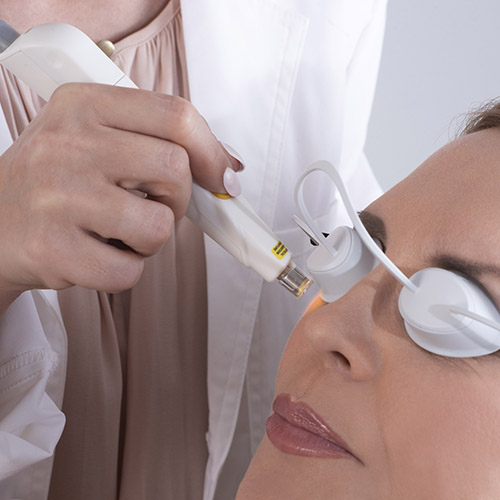

It’s no secret that screens of all kinds continue to become a bigger and bigger part of our lives. However, with the increased use of screens, there is increased risk to the eyes. One of the main issues that results from habitual screen usage is digital eye strain. Digital eye strain has multiple causes and symptoms, but it also has plenty of preventive measures that can counteract these symptoms.
What is digital eye strain?
Digital eye strain, also sometimes known as “computer vision syndrome,” is a temporary vision condition caused by the prolonged use of electronic devices. People who work on digital devices have persistent strain on the eyes from focusing on the screen, which requires constant effort from the eye muscles. Additionally, screens dry out the eyes at an increased rate. People engaging in regular non-screen activities blink anywhere from 10 to 15 times per minute. People looking at screens only blink 2 or 3 times per minute. Digital eye strain is especially pronounced in children – 83 percent of children are in front of screens for over three hours per day. Of those, 80 percent experience some sort of eye discomfort after using screens.What are some of the symptoms of digital eye strain?
Symptoms of digital eye strain include problems with the eyes, including burning, itchy or tired eyes, headaches, fatigue, loss of focus, blurred or double vision, and head and neck pain. These symptoms can be caused by a number of factors, including poor lighting around the screen, glares on the screen, sitting too close or too far away from the screen, or using poor posture while viewing the screen. Multiple of these factors can also combine to contribute to digital eye strain. Additionally, the constant use of screens may worsen existing vision problems.What does blue light have to do with this?
The term “blue light” is used by many as a general term when describing the effects of screens on the eyes. However, blue light refers to something much more specific. All electronic devices give off high-energy light waves that fall into the blue and violet parts of the light spectrum. These waves are which are shorter in length than many other ones that humans are exposed to, which can affect a person’s vision and even age their eyes at an increased rate. The waves combine to form tiny dots called pixels, which are what images on screens are made up from. Eyes have to work extra hard to focus on pixel images compared to non-pixel images.How can I prevent digital eye strain?
There are a number of ways to reduce and prevent the symptoms associated with digital eye strain:- Position your screen slightly below eye level.
- Increase text size on the screen to reduce the amount of eye muscle strain.
- Check the glare and brightness of the screen so that it does not hurt to look at.
- Adjust the amount of lighting in the room to be about the same level as the screen light.
- Consider adding an anti-glare coating or blue light filter to a pair of prescription glasses.
- Consciously blink and consider using artificial teardrops to keep eyes from drying out.

.jpg?width=500&height=500&ext=.jpg)
